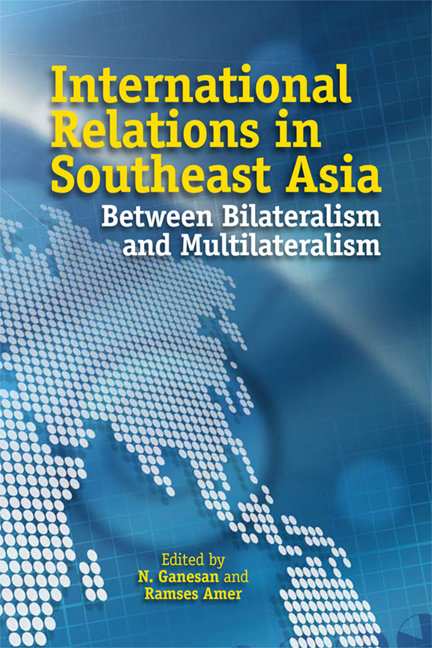Book contents
- Frontmatter
- Contents
- Preface
- List of Abbreviations
- Contributors
- Introduction
- Part I On International Relations
- Part II Case Studies — Mainland Southeast Asia
- 3 Vietnam-Thailand Relations after the Cold War
- 4 Cambodia and Vietnam: A Troubled Relationship
- 5 Thailand-Myanmar Relations: Old Animosity in a New Bilateral Setting
- 6 Thailand-Malaysia Bilateral Relations
- Part III Case Studies — Maritime Southeast Asia
- Conclusion
- Index
5 - Thailand-Myanmar Relations: Old Animosity in a New Bilateral Setting
from Part II - Case Studies — Mainland Southeast Asia
Published online by Cambridge University Press: 18 November 2017
- Frontmatter
- Contents
- Preface
- List of Abbreviations
- Contributors
- Introduction
- Part I On International Relations
- Part II Case Studies — Mainland Southeast Asia
- 3 Vietnam-Thailand Relations after the Cold War
- 4 Cambodia and Vietnam: A Troubled Relationship
- 5 Thailand-Myanmar Relations: Old Animosity in a New Bilateral Setting
- 6 Thailand-Malaysia Bilateral Relations
- Part III Case Studies — Maritime Southeast Asia
- Conclusion
- Index
Summary
Myanmar always has a special place in Thai political memory, albeit not necessarily for the right reasons. It has been made a main pillar for Thai nation-building and has provided a canvas on which the Thai state could paint its version of history based on their acrimonious past. In assessing today's bilateral relationship between Thailand and Myanmar, it is necessary to take historical factors into account. This is because history plays a fundamental role in the formulation of Thai policy towards Myanmar, and more contemporarily, as a justification to antagonize the Myanmar regime whenever bilateral problems arise. For the latter purpose, Myanmar's image as Thailand's number-one enemy would automatically be projected. The exception to this was during the periods of Chatichai Choonhavan (1988–91), Chavalit Yongchaiyudh (1996–97), Thaksin Shinawatra (2001–6), Samak Sundaravej (2008), and Somchai Wongsawat (2008) when Myanmar was reinvented as Thailand's new best friend, purely on the basis of commercial interests. These many faces of Myanmar crafted for political and economic consumption of the Thai elites have a powerful impact on the Thai solutions to problems with Myanmar.
The cordial relations between Thailand and Myanmar do not necessarily contribute positively to a solution of their existing contentious issues. Thailand-Myanmar conflicts have strictly been dealt with in a bilateral context even when both are members of ASEAN, and when ASEAN was ready to step in to help resolve those issues through its disputes settlement mechanism. This chapter argues that there are a number of fundamental reasons behind the reluctance and the unwillingness of both parties to make use of regional mechanisms, including the low level of confidence in regional bodies, the politics of interest that has prevented them from genuinely seeking solutions, and the state perception of sovereignty which has seemed to overpower the need to work at a supra-national level. This study looks more specifically into the case of Thailand-Myanmar conflicts and how they have been managed both bilaterally and regionally. More importantly, it discusses the issues from a Thai perspective; particularly how the shifting Thai policy toward Myanmar has shaped the way the two countries have solved their problems.
- Type
- Chapter
- Information
- International Relations in Southeast AsiaBetween Bilateralism and Multilateralism, pp. 117 - 142Publisher: ISEAS–Yusof Ishak InstitutePrint publication year: 2010



